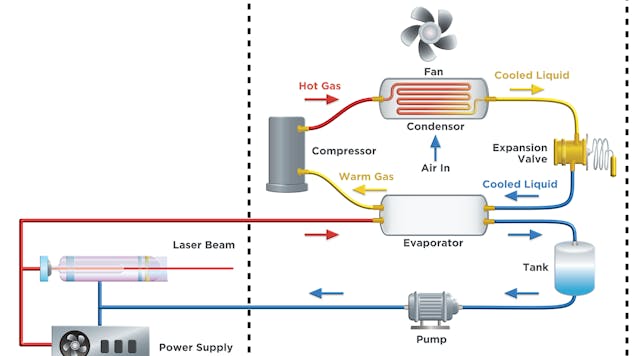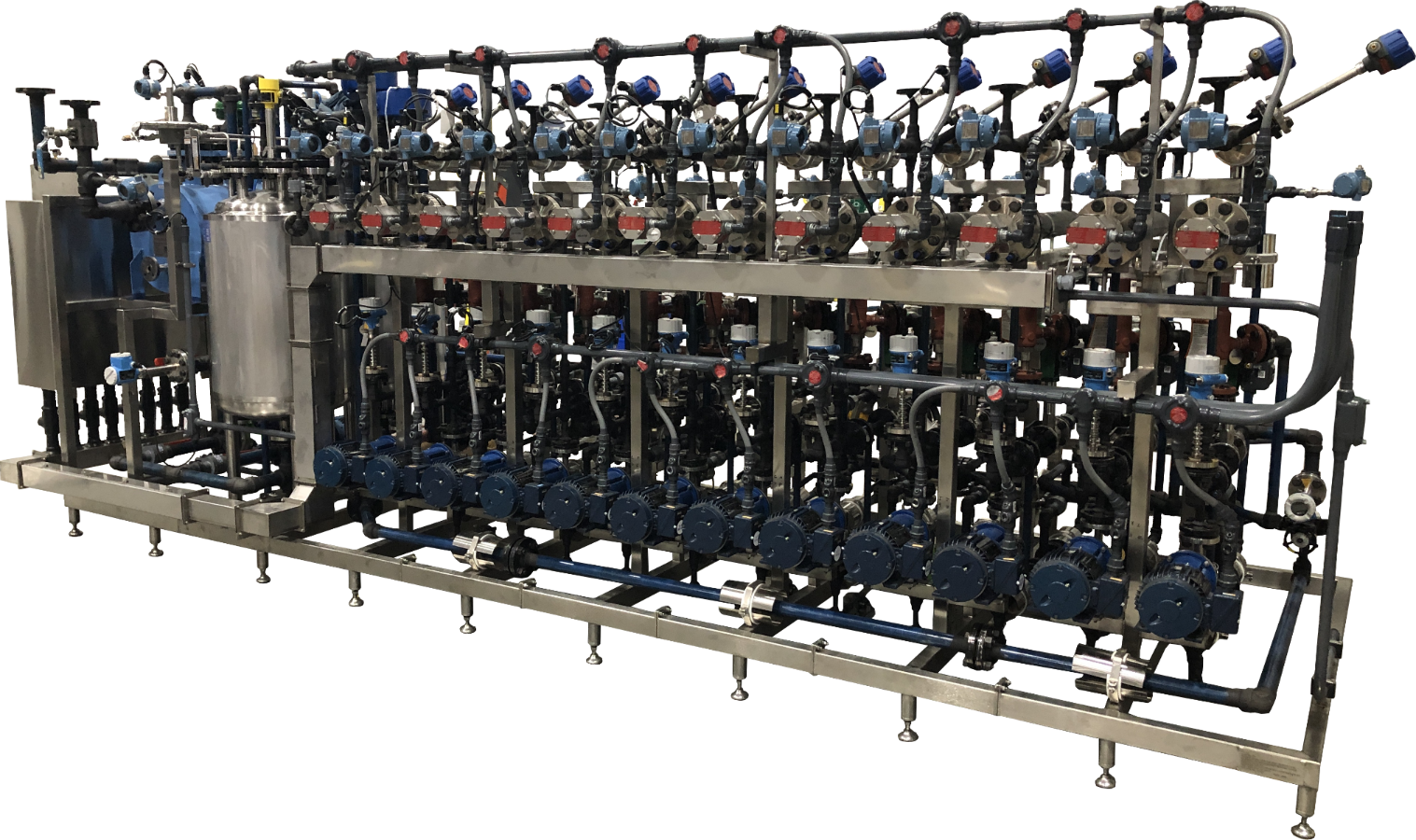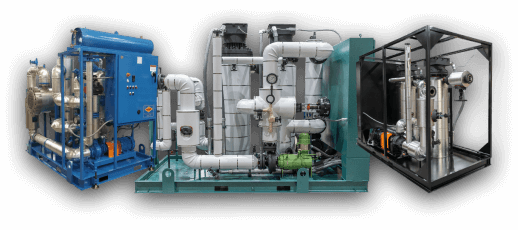Actionable Tips for Using DVS Heat Transfer Systems in Data Centers
Wiki Article
Technologies in Heat Transfer Equipments: What You Required to Know for Optimal Performance
Developments in Heat transfer systems are transforming efficiency throughout numerous sectors. Advanced materials like graphene and nanofluids promise substantial enhancements in thermal conductivity. The assimilation of IoT and maker knowing supplies opportunities for real-time surveillance and enhanced power effectiveness. However, the landscape of thermal management is quickly developing (DVS Heat Transfer Systems). Understanding these growths is necessary for achieving perfect system performance and sustainability in the future. What specific innovations are forming this makeover?Arising Products for Boosted Heat Transfer

Advanced Heat Exchanger Layouts
While traditional Heat exchangers have served their function in numerous applications, advanced styles are now emerging to satisfy the enhancing needs for effectiveness and performance. These cutting-edge styles, such as plate, shell-and-tube, and finned-tube Heat exchangers, incorporate enhanced surface and enhanced flow patterns to enhance thermal transfer prices. Furthermore, compact designs enable lowered space requirements without endangering performance. Advanced materials, such as composites and corrosion-resistant alloys, in addition boost resilience and efficiency under severe conditions. Moreover, simulation technologies and computational liquid characteristics are significantly utilized to improve these styles, making sure peak Heat transfer characteristics. As markets seek to reduce power consumption and optimize outcome, the adoption of advanced Heat exchanger layouts is critical in accomplishing these purposes.The Duty of Nanotechnology in Heat Transfer
Nanotechnology plays a vital role in enhancing thermal conductivity within Heat transfer systems. By controling products at the nanoscale, scientists have attained significant improvements in energy performance. These improvements not just maximize performance yet also add to even more lasting power remedies.Improved Thermal Conductivity
Considerable developments in thermal conductivity have actually emerged with the application of nanotechnology, reinventing Heat transfer systems across numerous industries. By incorporating nanoparticles right into Heat transfer liquids and materials, researchers have actually attained remarkable increases in thermal conductivity. These nanoparticles, such as carbon nanotubes, graphene, and steel oxides, boost the Heat transfer residential or commercial properties due to their high area and special thermal features. The resulting compounds display improved efficiency in applications varying from electronics cooling down systems to renewable resource innovations. The capacity to tailor the dimension, shape, and composition of nanoparticles permits for optimized thermal management services. Consequently, nanotechnology continues to play a critical role in the development of more efficient and effective Heat transfer systems, leading the way for improved commercial applications.
Energy Performance Improvements

Assimilation of IoT in Heat Transfer Solutions
The combination of IoT in Heat transfer systems presents the execution of smart sensing units that enhance functional effectiveness. These sensing units enable real-time data tracking, permitting for immediate modifications and optimizations. This technical development has the possible to substantially enhance efficiency and power monitoring in Heat transfer applications.Smart Sensors Execution
As Heat transfer systems develop, the combination of wise sensors through the Net of Things (IoT) has arised as a transformative technique. These sensors enable real-time surveillance of temperature level, stress, and circulation rates, boosting system effectiveness and integrity. By collecting and sending data, they facilitate positive upkeep, reducing the threat of system failings. In addition, smart sensors add to energy cost savings by refining functional specifications based on ecological problems. Their capacity to analyze abnormalities and patterns permits for notified decision-making, making certain peak efficiency of Heat transfer systems. As industries progressively adopt this modern technology, the execution of wise sensors stands to change just how Heat transfer systems are handled, paving the way for higher sustainability and boosted efficiency end results.Real-Time Information Surveillance
Exactly how can real-time information checking improve the efficiency of Heat transfer systems? By integrating Net of Points (IoT) technology, Heat transfer systems can leverage continuous information collection from smart sensors. This real-time surveillance enables for immediate analysis of temperature level, pressure, and flow rates, enabling drivers to recognize inefficiencies quickly. Modifications can be made to optimize efficiency, lower energy consumption, and prolong devices life-span. Additionally, predictive upkeep can be applied, minimizing unexpected downtime and pricey repair services. The ability to envision performance metrics via control panels boosts decision-making, cultivating an aggressive strategy to system monitoring. Inevitably, real-time data keeping an eye on not only boosts functional performance however likewise contributes to sustainability goals within industrial procedures.Power Effectiveness and Sustainability Trends
Power efficiency and sustainability patterns are reshaping the landscape of Heat transfer systems, driving technology and conformity throughout numerous markets. Organizations are increasingly focusing on energy-efficient layouts to decrease functional expenses and lessen environmental impacts. The integration of sustainable power sources is coming to be more prevalent, enabling Heat transfer systems to run sustainably while satisfying governing needs. Additionally, advancements in technologies and materials promote reduced power intake and enhance general performance. Lifecycle analyses are also gaining traction, allowing firms to review the ecological influence of Heat transfer systems from manufacturing to disposal. This concentrate on sustainability not only supports company responsibility however likewise placements organizations competitively in a market where consumers increasingly favor environmentally friendly services. Power effectiveness and sustainability remain vital factors to consider for future developments in Heat transfer innovation.Developments in Thermal Monitoring Solutions
While the demand for efficient Heat transfer proceeds to rise, advancements in thermal management remedies are arising to address both efficiency and sustainability challenges. Advanced materials, such as phase modification materials and nanofluids, are being established to boost Heat transfer performance - DVS Heat Transfer Systems. These materials boost thermal conductivity and permit far better temperature level guideline in numerous applications. In addition, innovations like active thermal control systems are obtaining grip, enabling real-time adjustments to handle Heat circulation efficiently. These systems contribute to power savings and decrease the environmental effect of thermal procedures. The assimilation of IoT in thermal monitoring facilitates monitoring and anticipating upkeep, making certain enhanced efficiency and durability of Heat transfer systems. Generally, these advancements represent significant strides toward even more lasting thermal resource administration techniquesFuture Directions in Heat Transfer Technology
Arising improvements in thermal administration services signal an encouraging future for Heat transfer technology. Scientists are significantly concentrating on developing materials with superior thermal conductivity and improved energy effectiveness. Developments such as nanofluids, which contain put on hold nanoparticles, provide significant improvements in Heat transfer performance. In addition, the integration of smart products that adapt to differing temperature conditions is acquiring grip, enabling more receptive and efficient systems. The rise of additive production strategies is also allowing the style of complex Heat exchanger geometries that maximize fluid flow. The execution of machine knowing algorithms is expected to transform the optimization of Heat transfer systems, helping with anticipating upkeep and efficiency enhancement. Jointly, these advancements are positioned to change the landscape of Heat transfer modern technologies in numerous markets.
Frequently Asked Questions

Just how Do I Select the Right Heat Transfer System for My Application?
Picking the best Heat transfer system his explanation entails evaluating application demands, consisting of temperature varieties, fluid buildings, and effectiveness requirements. Examining system kinds, upkeep factors to consider, and cost-effectiveness additionally plays a crucial function in making an informed decision.What Are the Maintenance Requirements for Advanced Heat Exchangers?
Upkeep needs for innovative Heat exchangers typically include routine evaluations, checking for leaks, cleaning of surfaces, and ensuring suitable flow rates. Complying with manufacturer standards warranties reliable operation and prolongs the equipment's lifespan.
Just How Do Ecological Elements Affect Heat Transfer Performance?
Environmental factors substantially influence Heat transfer efficiency. Variations in airflow, temperature, and moisture influence thermal conductivity and convective Heat transfer, inevitably impacting system performance and demanding consideration throughout the style and operation of Heat transfer systems.What Safety And Security Requirements Put On Heat Transfer Equipments?
Safety and security requirements for Heat transfer systems usually include standards from organizations such as ASME and ASTM. DVS Heat Transfer Systems. These requirements address materials, style, and operational methods to guarantee integrity, efficiency, and protection versus risks in numerous applications
Just How Can I Troubleshoot Usual Heat Transfer System Issues?
Repairing common Heat transfer system problems entails inspecting for leakages, ensuring proper fluid circulation, evaluating insulation stability, and validating temperature differentials. Identifying these aspects can help maintain system performance and stop additional complications.Nanotechnology plays a crucial duty in improving thermal conductivity within Heat transfer systems. Significant developments in thermal conductivity have arised via the application of nanotechnology, transforming Heat transfer systems across different sectors. Innovations in thermal conductivity via nanotechnology have actually paved the method for remarkable improvements in energy performance within Heat transfer systems. Power performance and sustainability fads are reshaping the landscape of Heat transfer systems, driving advancement and conformity across different sectors. The integration of IoT in thermal monitoring facilitates surveillance and anticipating maintenance, ensuring optimized performance and long life of Heat transfer systems.
Report this wiki page